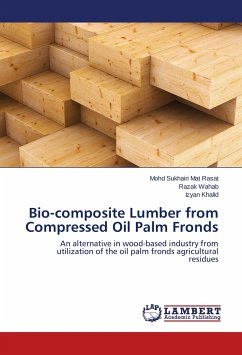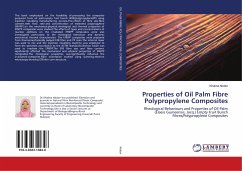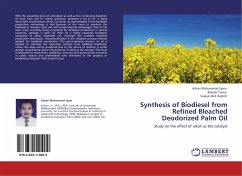Bio-composite lumber made from compressed oil palm fronds were produced by removing the leaflets and epidermis from the fronds before they were sliced longitudinally into thin layers. The layers were then compressed into uniform thickness of 2 - 3 mm. The layers were air-dried and later mixed with resins using 12-15% of phenol and urea formaldehyde and recompressed with other layers forming bio-composite lumber. The bio-composite lumber was then tested for their physical and mechanical properties. Testing was conducted in accordance to the International Organization for standardization (ISO) standard. The result on the physical and mechanical properties shows that the bio-composite lumber from compressed oil palm fronds possessed at par result compared to others composite. The bio-composite lumber from compressed oil palm fronds has potential to be used as an alternative to wood to overcome the shortage in materials supply in the wood-based industry.








